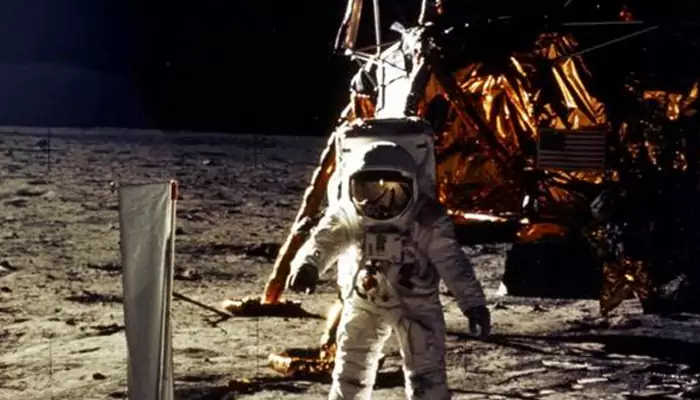
The mission, Apollo 11, was launched on July 16, 1969, and landed on the lunar surface on July 20.
Fifty-six years ago, on July 20, 1969, the world stood still as a grainy television broadcast captured a moment that would change history forever. It was Neil Armstrong descending from the lunar module and taking that iconic first step onto the Moon. He declared, “That’s one small step for man, one giant leap for mankind,” becoming a name etched into every textbook, documentary, and childhood dream about space. But there's a question that still sparks curiosity: why Armstrong? So why not Buzz Aldrin, the other astronaut aboard Apollo 11 who followed him just 19 minutes later? Or anyone from the other equally skilled astronauts in NASA’s elite corps? So, on this International Moon Day, as we celebrate one of humanity’s greatest achievements, let’s revisit the reasoning behind NASA’s choice and the lesser-known details that shaped one of the most defining moments in space history.

In early 1969, as NASA finalized the Apollo 11 crew, three astronauts were chosen from a pool of 29: Neil Armstrong, Edwin Buzz Aldrin, and Michael Collins. Collins was immediately assigned as the command module pilot, which meant he would remain in lunar orbit aboard Columbia while two of his crewmates descended to the Moon.
That left Armstrong and Aldrin, both of whom were decorated pilots, highly skilled, and trained for extravehicular activity. So naturally, speculation swirled about who would be the first to step onto the Moon. Interestingly, tradition suggested it would be Aldrin. On previous missions, it had always been the Lunar Module Pilot who exited the spacecraft while the Commander remained inside. Aldrin himself hoped it would be him, and he wasn’t exactly shy about expressing it. Chris Kraft, then head of Mission Control, would later write, “Buzz Aldrin desperately wanted the honor and wasn’t quiet in letting it be known.”

Neil Armstrong, by contrast, was characteristically calm and unconcerned with personal glory. In a later interview, he summed it up simply: “Circumstance put me into that particular role. That wasn’t planned by anyone.”
While NASA publicly downplayed any favoritism, a combination of personality, politics, technical practicality (and timing) shaped the final decision.
For one, Armstrong was appointed Commander of Apollo 11, while Aldrin was assigned the role of Lunar Module Pilot. And just three months before launch, the official timeline was adjusted to show the commander (not the pilot) exiting first. As astronaut Deke Slayton later revealed, “I changed it as soon as I found they had the timeline that showed Aldrin getting out first. I figured the commander ought to be the first guy out.”
But why Armstrong specifically?
Part of the reason was his temperament. Neil Armstrong had earned a reputation at NASA for being remarkably composed under pressure. Whether flying the X-15 rocket plane or piloting Gemini 8 through a near-disastrous spin, Armstrong remained cool, methodical, and focused. NASA’s Flight Director Chris Kraft described him as “calm, quiet, and with absolute confidence,” noting, “We all knew that he was the Lindbergh type. He had no ego.”

Well, that last part mattered. NASA wanted someone who would represent all of humanity, not just the space program, so they needed a humble, grounded figure. Armstrong fit that vision perfectly. As space historian Rod Pyle put it, “Neil Armstrong really was, right until the end of his life, an incredibly humble man, awed by what he had done, but not terribly impressed by it.”
Yet the decision wasn’t purely symbolic or personality-driven, because there were practical reasons, too.
Inside the cramped Lunar Module Eagle, Armstrong and Aldrin had specific positions. Armstrong stood on the left, Aldrin on the right. The lander’s hatch opened inward and to the right, meaning Aldrin would have had to climb over Armstrong (bulky suits, oxygen backpacks, and all) to exit first. NASA tried simulating this arrangement and found it cumbersome and even damaging to the equipment.
(Credit: Associated Press)
So, logistics made it easier for Armstrong to go first. NASA would later clarify: “To get out first, it would have been necessary for one bulky-suited, backpacked astronaut to climb over another.” When tested during training, that maneuver damaged the mock lunar module. The decision was sealed.
So, Neil Armstrong became the first to step onto the Moon not because he had lobbied for it, but because he was the right choice. The rest, as they say, is history.